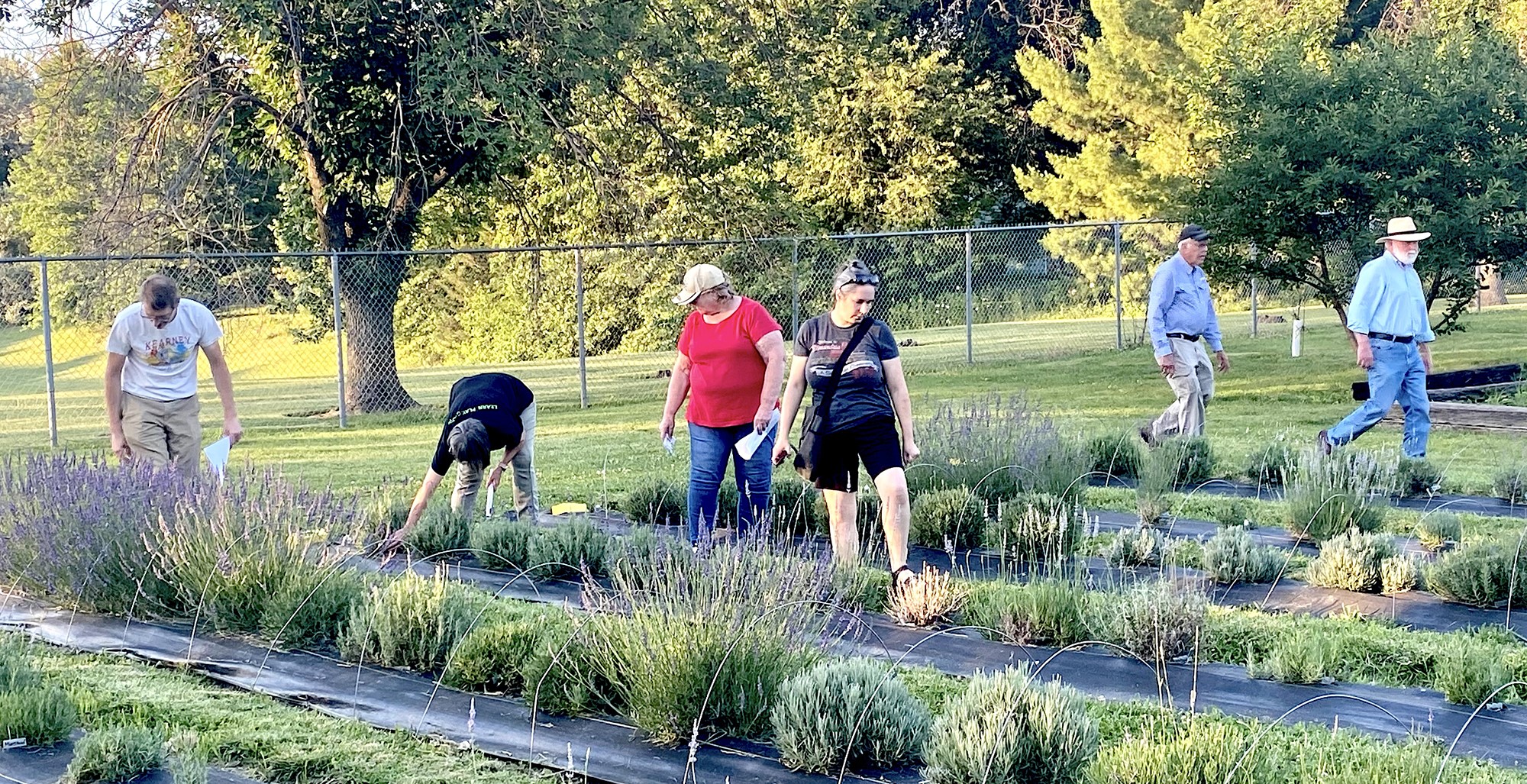MU Extension research on lavender finds options for Missouri growers

SPRINGFIELD, Mo. — After three years of research, University of Missouri Extension horticulture specialists are learning how to successfully grow lavender in Missouri.
The popularity of lavender’s fresh scent has endured since ancient times. Cleopatra reportedly used it to seduce Julius Caesar and Mark Antony. By the 16th century, people were using it to ward off disease, preserve the dead and ease indigestion.
In a press release, Kelly McGowan, who lead the study, said, “Lavender is more popular than ever.”
Today, lavender’s scent is promoted in many products – detergents, body soaps, balms, perfumes, toilet tissue and much more. It is also used in cooking and medicines.
Because of Missouri’s diverse climate and topography, MU researchers planted test plots in four locations in the state. McGowan used the Springfield Botanical Garden for plots; horticulturists Katie Kammler and Donna Aufdenberg planted at the MU Extension Center in Ste. Genevieve; Patrick Byers planted at MU’s Southwest Research Center in Mount Vernon; and Jennifer Schutter grew 22 cultivars and 120 plants over three years in northern Missouri at Kirksville.
They found that six main cultivars perform well in Missouri: Dutch Mill, Grosso French, Munstead English, Hidcote English, Phenomenal and Provence. Spanish varieties of lavender do not survive Missouri winters, says McGowan. High humidity also can adversely affect some varieties. As with all gardening, perform, have soil tested before planting and follow recommendations.
Regardless of location, this member of the mint family suffers when it receives too much water. MU researchers suggest growing it in raised rows and beds, containers or high tunnels with good drainage and protection from excessive rainfall. A watering schedule that keeps plants on the dry side also is preferred.
Plants need to be covered in colder climates such as in northern Missouri, says Schutter. During the study, she covered some rows and left others uncovered. Uncovered plants died or suffered dieback and needed severe pruning in spring. Protected plants survived, with the exception of one cultivar, Blue Spear, which is not recommended in north Missouri.
Plants grow about 1-2 feet tall. Dense hairs coat the pale green leaves to give them their trademark silvery luster. The light purple lavender flowers are tiny and arranged in spikes. Every part of the plant contains the oil that produces a sweet fragrance.
“Fresh lavender plants will keep a garden fragrant as well as attract a variety of pollinators like bees, butterflies, praying mantis and others,” says Schutter. “In urban settings where the population of natural pollinators, including bees and butterflies, is on a decline, lavender plants offer an invaluable attraction to these species.”
In addition to drawing pollinators, lavender can keep away unwanted insects such as fleas, flies and mosquitoes.
Kammler describes this perennial as “finicky.” Even within the same area, cultivars may respond differently. MU horticulturists say growers should plan for some failure – as much as 20%-25% plant loss each season.
Plants are easy to propagate, although some cultivars are trademark-protected and propagation is prohibited. For questions, contact McGowan at mcgowank@missouri.edu.
McGowan says there is a strong demand for lavender for home gardeners and those wanting to sell value-added products such as soaps, oils and balms. “You can very likely sell what you grow,” she says.
“Lavender provides many opportunities for those with small acreages,” says Byers. In the next phase of MU Extension’s research, horticulturists plan to explore ways that growers can raise lavender to boost Missouri’s agricultural economy through agritourism and value-added products, he says.
The researchers also plan to release an MU Extension guide on lavender growing in the spring.
You can contact McGowan at mcgowank@missouri.edu, Kammler at kammlerk@missouri.edu, Byers at Byersp@missouri.edu, Schutter at schutterjl@missouri.edu or Aufdenberg at aufdenbergd@missouri.edu.
The Missouri Department of Agriculture provided funds for the research through a USDA Specialty Crop Block Grant.
Miss Clipping Out Stories to Save for Later?
Click the Purchase Story button below to order a print of this story. We will print it for you on matte photo paper to keep forever.

